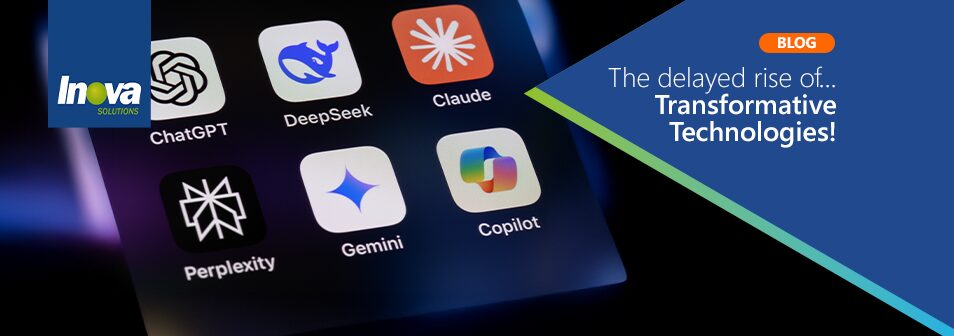This website uses cookies so that we can provide you with the best user experience possible. Cookie information is stored in your browser and performs functions such as recognising you when you return to our website and helping our team to understand which sections of the website you find most interesting and useful.
Blog

July 14, 2025
How old ideas like AI, QR codes, and Bluetooth finally made it
Many groundbreaking technologies, including Artificial Intelligence (AI), Bluetooth, QR codes, and even the Internet, took decades to gain widespread adoption. This delayed emergence isn’t necessarily due to flaws in the technology itself but rather the context in which they were initially introduced by their makers.
AI, for example, was conceptualized as early as the 1950s, yet only recently has it become mainstream. The same was true for Bluetooth, which debuted in the 1990s, but only saw mass usage once smartphones and wireless ecosystems matured. Why? The key driver for their current-day relevance is infrastructure. In the past, computing power, data storage, and internet bandwidth were insufficient to support AI’s potential. In fact, for many AI solutions today, infrastructure such as energy and data hubs is still a challenge.
Another significant factor is timing. Many technologies were “too early for their time.” QR codes, created in 1994, had limited impact until mobile cameras, data, payments, and apps became ubiquitous, enabling a clear and useful application. The entire smartphone and telecom industry had to exist and mature before QR codes became useful.
User readiness also plays a critical role. People often need time, context, and experience to understand how to integrate new tools into their daily lives. Users need both the capability to access technology and a compelling reason to change their existing behaviors. Which requires a mass shift in culture, customs, and ultimately, this takes a long time. This was evident with the internet, which only truly took off once personal computers, user-friendly browsers, and applications made it easily accessible and essential.
Lastly, contextual relevance. Unforeseen events, such as the COVID-19 pandemic, catapulted many underutilized technologies into the mainstream again. Arguably this was a time when QR codes saw their highest peak in worldwide use.
These examples demonstrate that innovation alone doesn’t dictate success. Timing, supporting infrastructure, and human readiness are essential in turning potential into global standards.
Today, we see this convergence playing out again with tools like Microsoft Copilot, the AI assistant seamlessly integrated into the apps millions use daily. It’s not just a cool feature, it’s a sign that the infrastructure, timing, and user readiness have finally aligned. What was once experimental is now essential. The difference today is speed. Adoption curves are shrinking, and waiting to “catch up” later could mean falling drastically behind. As technologies like Copilot become the new normal, businesses and individuals that hesitate may find the gap harder to close over time. Now isn’t just a good time to start embracing these tools. It might be the last window before the pace becomes a burden rather than the natural flow of evolution.

